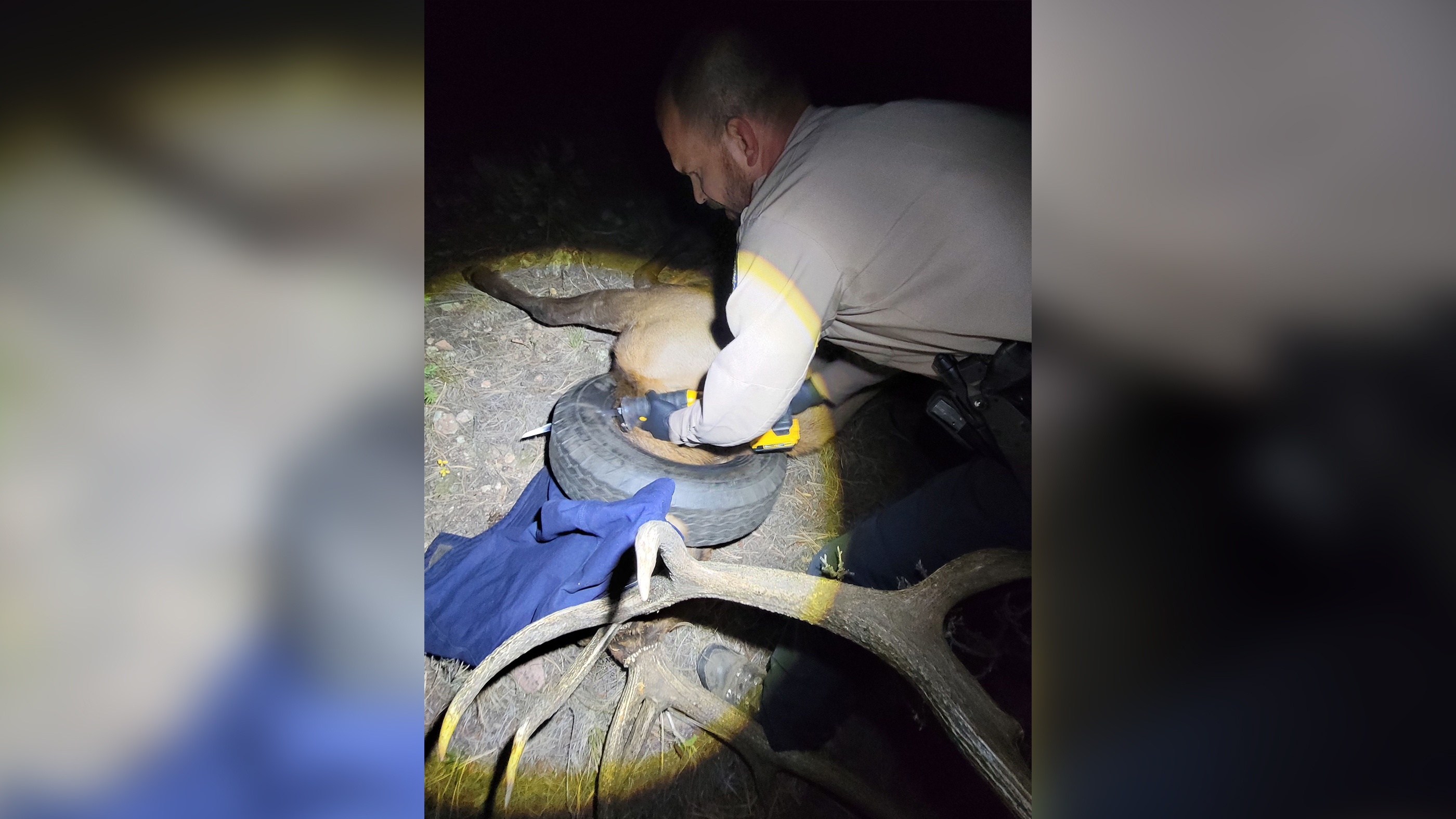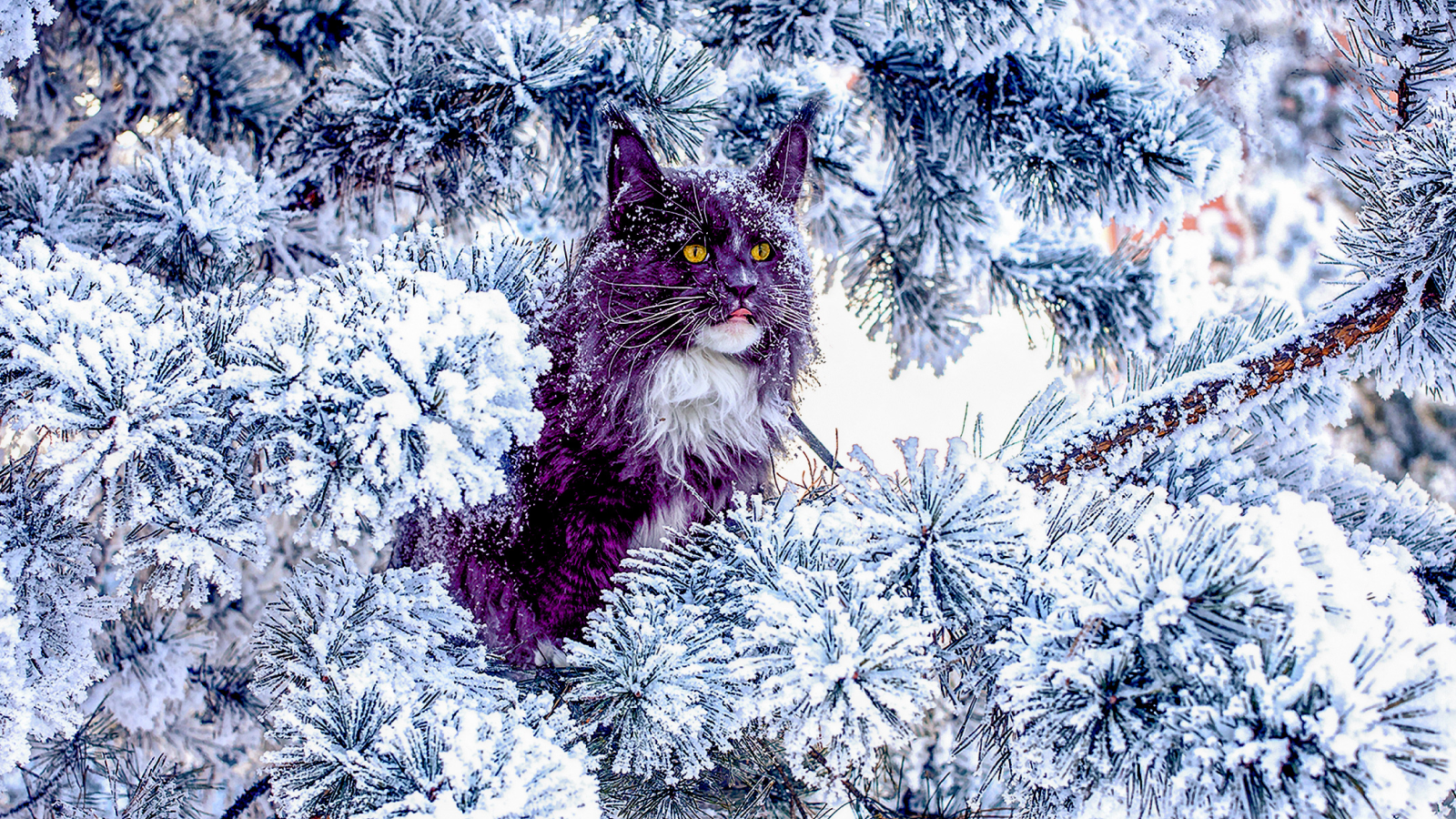Elk finally liberated from car tire stuck around its neck for 2 years
Wildlife officers had to cut off the bull's antlers to slide off the tire.
A bull elk in Colorado is finally free of a rubber tire that had been stuck around the animal’s neck for over two years. On Saturday (Oct. 9), officers from Colorado Parks and Wildlife (CPW) removed the hefty accessory (along with the elk’s antlers).
Rangers first spotted the 4.5-year-old elk, which weighs around 600 pounds (272 kilograms), during a wildlife survey of the Mount Evans Wilderness in July 2019. Several attempts had been made to capture the bull since then, but it always managed to evade officers.
CPW wildlife officers were finally able to bring down the elk with a tranquilizer dart and successfully remove the tire, after members of the public reported seeing it in the Pine Junction area.
Related: The 10 weirdest medical cases in the animal kingdom
"It was tight removing it [the tire]," Scott Murdoch, a wildlife officer at CPW who aided in the operation, said in a CPW statement. "It was not easy for sure."



Unfortunately, the officers also had to remove the elk's antlers to get the tire over its head, because a steel band inside the tire prevented the officers from cutting through it. Luckily, the elk was back on his feet just minutes after the antlers were removed and was in good health.
"We would have preferred to cut the tire and leave the antlers for his rutting activity, but the situation was dynamic and we had to just get the tire off in any way possible," Murdoch said.
Get the world’s most fascinating discoveries delivered straight to your inbox.
Elk (Cervus canadensis) use their antlers during rutting, a type of antler-locked wrestling, to establish dominance over other males and gain mating rights with a harem of females. Males grow a new set of antlers every year before the breeding season, so removing the antlers means this bull is likely to remain mate-less this year, but it will get another chance next year.
The elk either got the tire stuck when it was young and before it had any antlers, or during the winter after it had shed them. The most likely scenario is that the animal put its head in a tall stack of tires left abandoned somewhere and picked one up by accident, according to the statement.
The officers believe that the elk shed around 35 pounds (16 kg) after losing both its antlers and the tire, which was full of pine needles and dirt that added additional weight, according to the statement.
The officers feared that the elk may have sustained significant damage after lugging the heavy tire around its neck, but after removing the rubber ring, they were surprised to find little to no damage. "The hair was rubbed off a little bit, and there was one small open wound maybe the size of a nickel or quarter, but other than that it looked really good," Murdoch said. "I was actually quite shocked to see how good it looked."

Close-up video footage of the elk captured by a camera trap in 2020 and shared on CPW’s Twitter page also suggests that the tire may only have been a minor inconvenience to the bull as he nonchalantly strolled through the woods.
CPW officers had previously tried many times to catch the elk since it was first spotted. Between May and June, four unsuccessful attempts were made to capture the elusive elk but officers were unable to get a clean shot. The elk was also spotted three times on camera traps in 2020 but was never located, according to the statement.
While this case is shocking, animals in Colorado getting caught in human-made items is nothing new. CPW officers have also witnessed deer, moose, bears and other wildlife that have become entangled in a number of human-made obstacles, including swing sets, hammocks, clothing lines, decorative lighting, furniture, tomato cages, chicken feeders, laundry baskets, soccer goals and volleyball nets, according to the statement.
Originally published on Live Science.

Harry is a U.K.-based senior staff writer at Live Science. He studied marine biology at the University of Exeter before training to become a journalist. He covers a wide range of topics including space exploration, planetary science, space weather, climate change, animal behavior and paleontology. His recent work on the solar maximum won "best space submission" at the 2024 Aerospace Media Awards and was shortlisted in the "top scoop" category at the NCTJ Awards for Excellence in 2023. He also writes Live Science's weekly Earth from space series.



